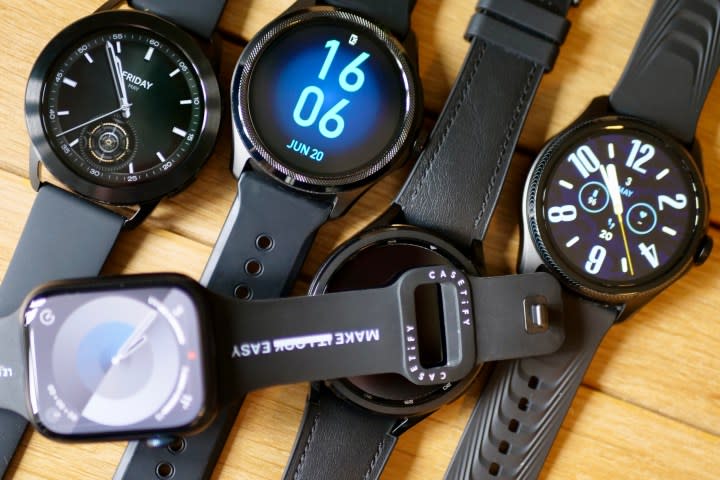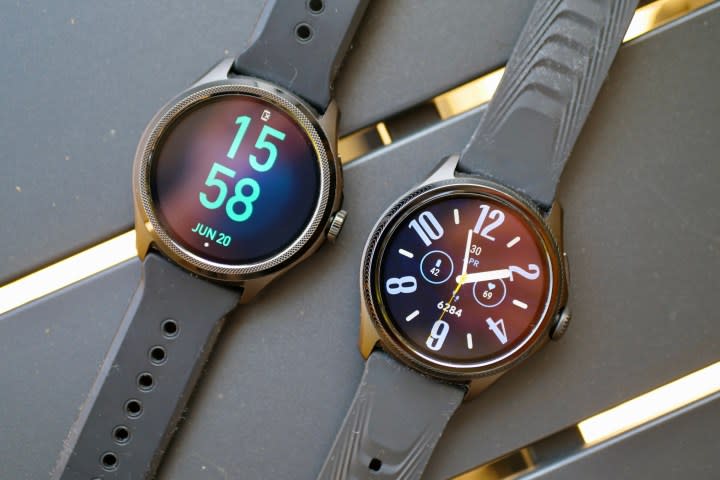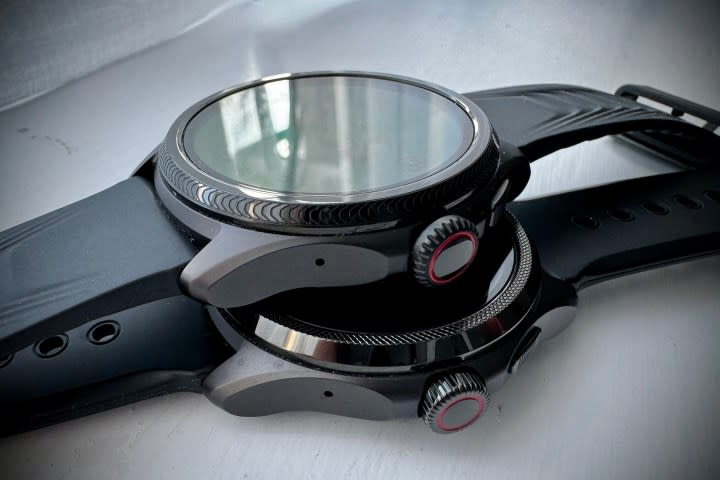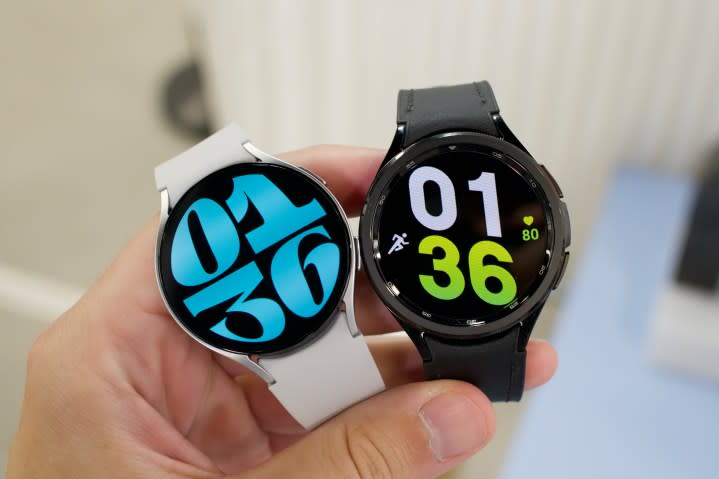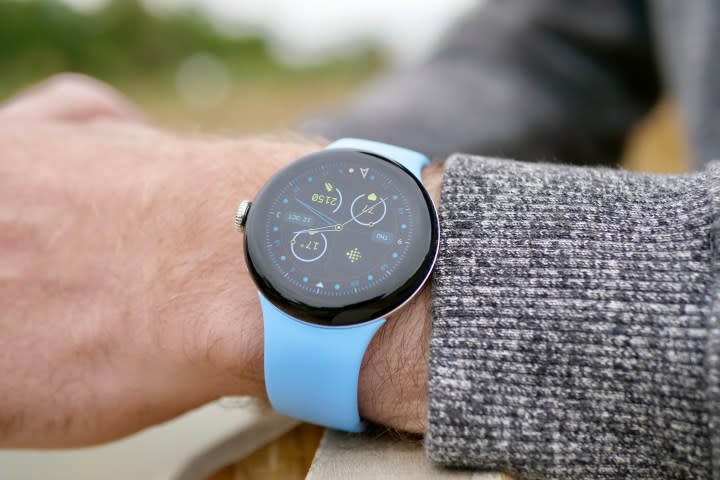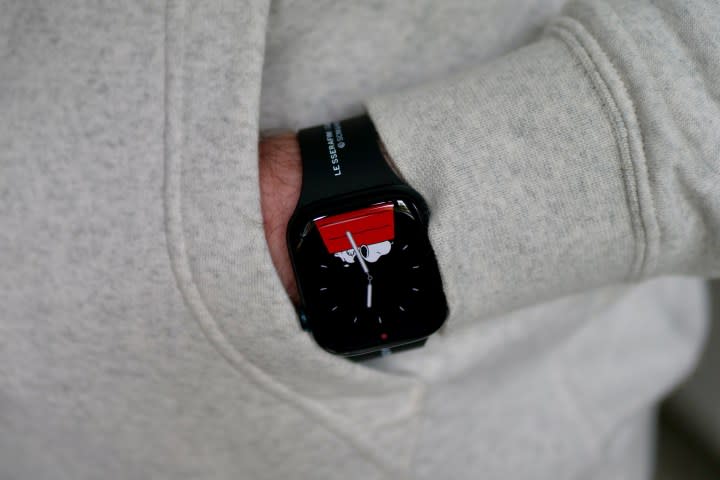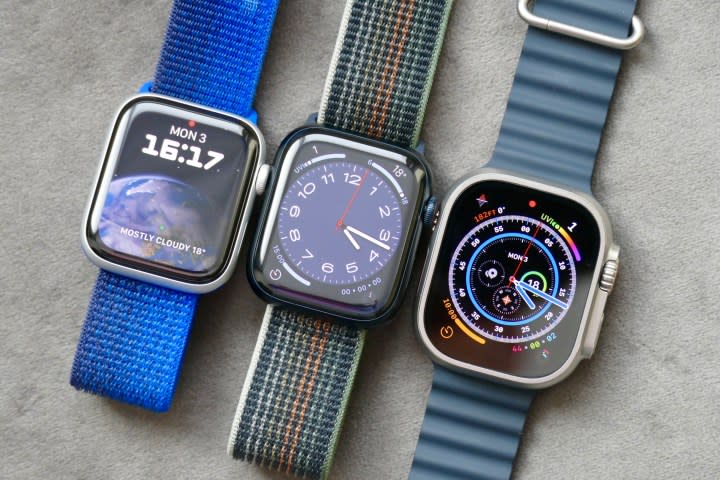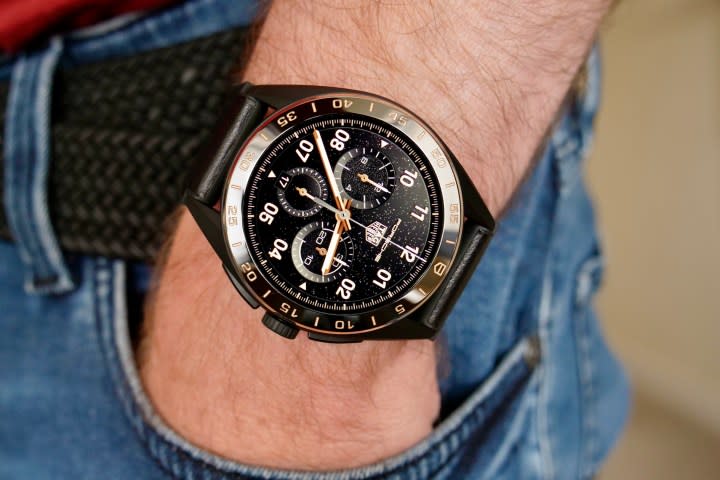Smartwatches are in big trouble
I recently reviewed the Mobvoi TicWatch Pro 5 Enduro, and it’s very good indeed. It’s fast, capable, and comfortable to wear, with a decent app and long battery life. The thing is, it’s actually only a gently warmed-over version of the same smartwatch released this time last year, which normally would be the kiss of death for any new product.
However, in the stagnant world of Wear OS, it’s apparently entirely possible to release basically the same product one year later and for it to still be a recommended purchase. The situation perfectly sums up the state of smartwatches at the moment, and it couldn’t be happening at a worse time because two serious threats are looming.
Is it really the same?
Surely, I’m exaggerating, right? The TicWatch 5 Pro Enduro can’t be almost the same as the TicWatch 5 Pro, as there’s a year separating their release dates! No, the dual screens, processor, battery capacity, battery life, charging speed, and software are all identical. The bezel and crown design is different, there’s sapphire crystal instead of Gorilla Glass over the screens, plus a tiny alternation in the thickness of the case, but that’s really all. The heart of the TicWatch Pro 5 Enduro remains the same as last year’s version.
The TicWatch Pro 5 Enduro could have easily been launched alongside the TicWatch Pro 5 — it’s that similar — and there are no technical innovations inside that were unavailable back then. But the thing is, Mobvoi’s one-year-on face-lift makes some sense, as in reality, there’s no actual ability or need to change it any further.
Let me explain. The Qualcomm Snapdragon W5+ Gen 1 processor is still the best you can get in a Wear OS smartwatch, the TicWatch Pro 5 Enduro is still the only current smartwatch to use the innovative dual-screen system to maximize efficiency, and the battery life still beats the competition by at least a day or two. It has a timeless (if you’ll forgive the pun) round case, rotating crown, and single action button design, along with a new, very comfortable strap. There’s just mot much for Mobvoi to change about it, even if it was so inclined.
It’s not just Mobvoi
There has been so little advancement in the world of smartwatches and Wear OS that a year-old device can hit the market and still be very good indeed. If that’s not a depressing snapshot of Android wearables at the moment, I don’t know what is. Why? Despite what you may initially think, it’s not because the TicWatch Pro 5 Enduro isn’t really “new”; it’s because the wearables space and, therefore, the competition, doesn’t have anything “new” either, allowing this what’s-old-is-new-again situation to occur and be acceptable.
There are three main challengers to the TicWatch Pro 5 Enduro: The Samsung Galaxy Watch 6, the Google Pixel Watch 2, and the OnePlus Watch 2. The Galaxy Watch 6 isn’t a huge leap forward over the Galaxy Watch 5, with the having a very similar design, so Samsung arguably pulled the same trick as Mobvoi. It even brought back the rotating bezel for the Galaxy Watch 6 Classic after misguidedly abandoning it the year before. The Pixel Watch 2 simply became a good smartwatch compared to the first Pixel Watch, rather than including anything special or innovative.
OnePlus also managed to make a far better smartwatch the second time around, and it also did something really interesting with the dual-processor/dual-software approach to efficiency, but the OnePlus Watch 2 still can’t beat the TicWatch Pro 5 Enduro for battery life. The only area where Mobvoi falls short against the competition is the software, as it’s stuck on Wear OS 3.5 instead of having Wear OS 4. But in all honesty, it was hard to tell the difference when I reviewed the watch, and the issue is more about device longevity than any user benefits in the latest software.
Not even Apple is safe
Just because I haven’t mentioned Apple yet doesn’t mean it’s exempt either, as the Apple Watch Series 9 and Series 8 are very similar, and you can still happily buy an 18-month-old Apple Watch SE 2 and be very satisfied. It’s the same with the Apple Watch Ultra and Apple Watch Ultra 2. Smartwatches have reached the point where very little is new, and innovation in the hardware is moving too slowly to make creating an exciting, truly updated model on an annual or possibly even biannual basis realistic or required.
To recap, there isn’t a big, noteworthy new chip for wearables that companies can use, and the models that are out there work very well indeed, look great, and will be good companions for years to come. They may not be that fresh or exciting, but they are refined, dependable, and recommended purchases. It’s not a good time for smartwatch innovation or advancement, but it is a golden period for the smartwatches we can buy.
However, not all of these companies get a complete pass for not making much of an effort. Mobvoi, Google, and OnePlus are all lazy for not making two smartwatch case sizes, as only having a massive TicWatch Pro 5 Enduro is just as shortsighted as only making a petite Pixel Watch 2. Surely,both could have added a second size in addition to trotting out a vaguely warmed-over “new” model to spice the range up?
A bleak horizon?
It’s bleak out there in the world of smartwatches. Fossil and its cadre of designer brands no longer make them, leaving the future in the hands of tech companies or luxury brands like Tag Heuer and Montblanc. Outside of cool brand collaborations, is there anything on the horizon that will inject some much-needed excitement into our high-tech wristwear, or are we set for more models like the TicWatch Pro 5 Enduro for the foreseeable future?
Until next-generation health tech like blood glucose monitoring gets worked out or newcomers like Mijo Connected are up and running, we may see more quirky designs like the Xiaomi Watch S3 and Casio continuing to refine its software and apps used on the connected G-Shock range. Crucially, Casio also has a dedicated fan base that isn’t all about the tech, insulating it against two serious incoming threats that may be about to ravage the stalled smartwatch world: smart rings and smart glasses.
The Samsung Galaxy Ring is almost here, set to take on the might of the excellent Oura Ring, and it will almost certainly propel smart jewelry into the public consciousness in a way we haven’t seen yet. A big part of smartwatch ownership is health tracking, and a smart ring (when done right) is a far more convenient way to do it, meaning smartwatch sales may suffer when the products are a bit stale, should Samsung’s ring prove desirable.
Smart glasses are right behind smart rings, with the Ray-Ban Meta specs evolving quickly with more relevant and fun functionality to match the already vastly improved wearability. Right now, smart rings and smart glasses are more technically exciting than a smartwatch, and because none of us really need a wearable device, we tend to gravitate toward the most high-tech, exciting, and futuristic choice when buying one. Unfortunately, at the moment, that’s just not a smartwatch, and it’s not very clear when this may change.

